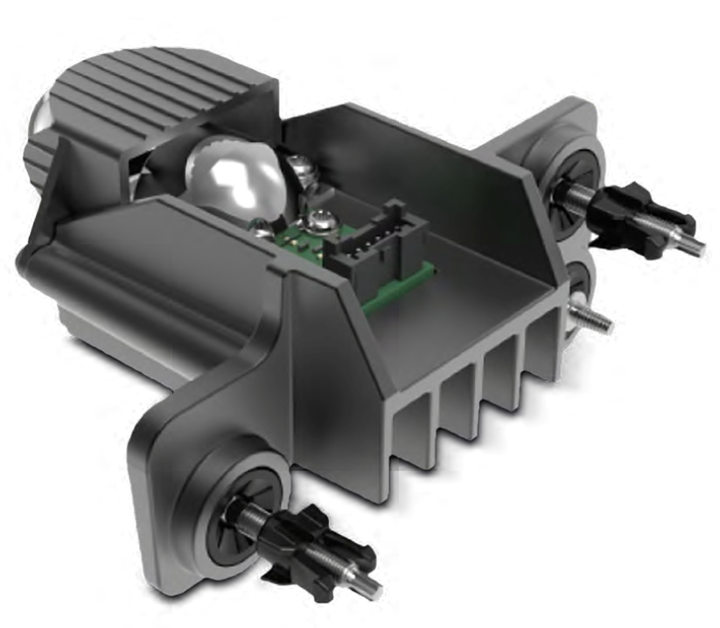X2F and Covestro Collaborate on Innovative In-Mold Electronics for Automotive Lighting
Thermally conductive PC heat-sinks produced with X2F controlled viscosity molding.
X2F has entered into a unique collaboration with Covestro to develop a thermally conductive automotive heat-sink with in-mold electronics (IME) using the company’s controlled viscosity molding technology. Molded of Makrolon PC, the new heat-sink is nearly half as heavy than the typical cast aluminum part, and presents a unique alternative for automotive OEMs and processors who seek a replacement for aluminium heat-sinks that is both 49% lighter and more affordable. Application samples are being displayed by Covestro at K 2022.

The Makrolon PC heat sink is part of an in-mold assembly that can be used to integrate LED modules directly into the headlamp housing – eliminating the weight and labor associated with the installation of brackets, screws, thermal pastes, and adhesives. The X2F technology is production-ready and has been demonstrated in high-volume series manufacturing for other applications. The process enables sensitive electronics to be insert molded, thus providing functional integration, heat management, modularity, and miniaturization.
Covestro continues to pioneer the use of IME coupled with the heat management that Makrolon TC polycarbonate provides. Said Covestro sr. marketing manager Paul Platte, “This new program involves using controlled viscosity molding by X2F to attach the LED module directly onto the thermally conductive heat-sink without fundamentally changing the heat-sink adjuster module design. We are pleased with the outcome so far of the X2F project where we have recently seen enhanced thermal management performance compared to traditional injection-molded processes, and look forward to how the automotive industry will adopt the technology.”
X2F’ ability to mold thermally conductive materials has applications far beyond heat-sinks. Thermal management is critical for superior performance in batteries, motors, and printed circuit board applications. The X2F controlled viscosity, low-pressure molding approach allows highly filled materials to be molded that are not possible with other manufacturing approaches. The result is said to be a 30% to 200% improvement in performance depending on the application and materials used.
As reported earlier this year, X2F added a rotary table which reduces cycle times and opens up higher-volume production for its controlled viscosity molding machine. The rotary table enables X2F to reach production volumes of up to 4 million/yr with one unit, depending on the cycle time, for the manufacture of critical components in the electronics, automotive, industrial, and medical industries.
Related Content
-
Inline Inspection System for Wood Plastic Composites
Pixargus’ ProfilControl 7 DX WoodPlasticComposites measure all dimensions and geometrics, including deep grooves.
-
Compact Entry Rotating-Rack Series of Weather Testers Expanded
Atlas’ Xenotest now also available to meet American standards.
-
All-Motor Driven Pad Printing Machine
Deco Technology now selling the new ML-500E linear & servo motor driven from microPrint of Switzerland








